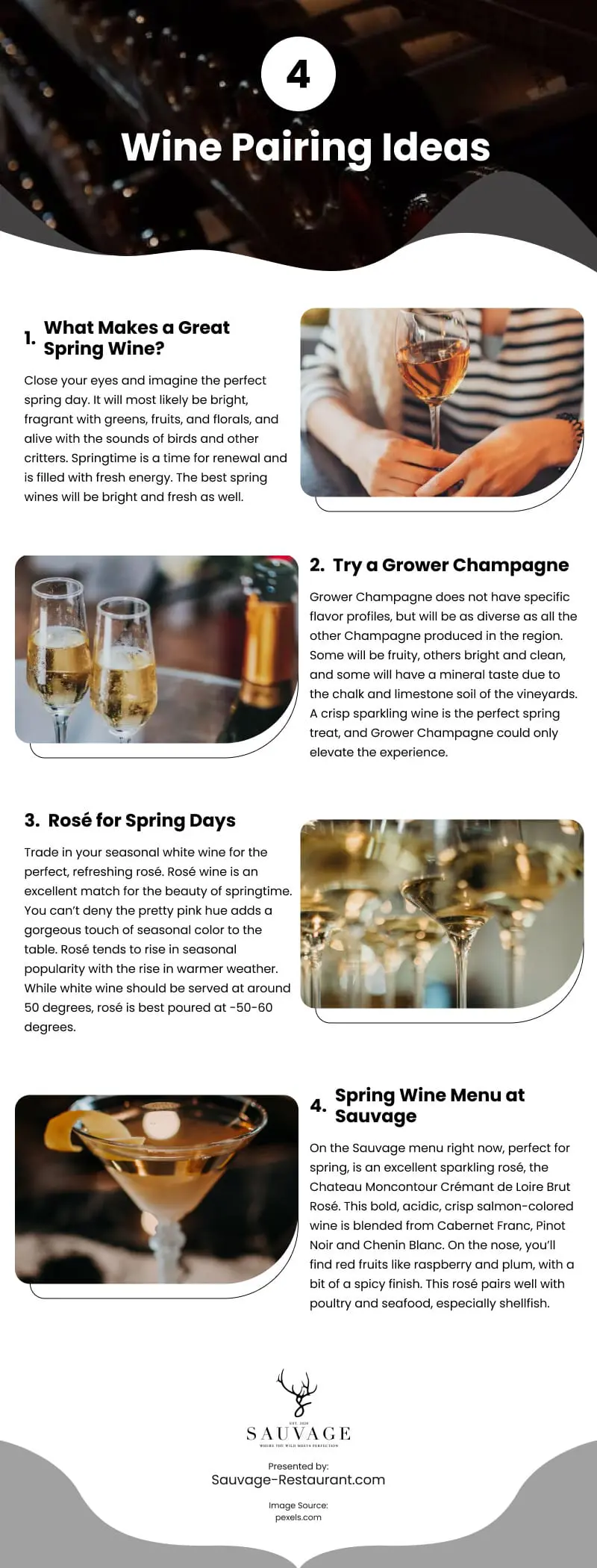
As the trees burst with vibrant green foliage and temperatures rise, it’s the perfect moment to exchange the robust, winter-warming wines for lighter, fresher options that complement the lively spirit of spring. Embrace the sunshine, blooming flowers, and outdoor gatherings with a selection of the finest wines tailored for the season. While the association with warmer weather often leans towards white wines, wines of every hue can harmonize beautifully with the bounty of spring harvests, sunlit days, outdoor occasions, and lighter culinary choices. Determining the ideal wine for the season involves a bit of knowledge, research, and perhaps a couple of tastings to find your perfect match.
1. What Makes a Great Spring Wine?
Imagine a bright spring day filled with greens, fruits, and florals, accompanied by bird sounds. Selecting the perfect spring wines should embody brightness and freshness, showcasing renewal and energy.
- Acidity:
A well-suited springtime wine should carry a touch of acidity. Grapes grown in cooler climates tend to impart more acidity to the flavor profile of a wine. To complement a spring menu featuring fresh fruits, vegetables, and lighter meats like poultry or seafood, seek out vineyards situated in areas with a lower average temperature. For an optimal wine pairing, align acidity with the crispness of fresh springtime foods. - Lightness:
Opt for wines with a light-to-medium-bodied profile, steering clear of full-bodied options. Full-bodied wines, with higher alcohol content, are better suited to colder temperatures when warmth is essential. A light-bodied or medium-bodied wine offers a more delicate palate experience, making it ideal for outdoor enjoyment in the sunshine or while relishing the season’s freshest produce. - Bubbles:
The effervescence of bubbles introduces a sense of celebration to any meal, gathering, or event, making it a perfect way to usher in the spring season. Whether your preference leans towards Champagne, Cava, Prosecco, or a local sparkling wine, a glass of bubbly complements a light spring menu or stands as a refreshing indulgence on its own.
2. Try a Grower Champagne
Grower Champagne is a unique type of Champagne crafted and bottled by the individuals responsible for grape cultivation. In the US, less than 10% of imported champagne qualifies as grower champagne. Known as single-origin Champagnes, Grower Champagne showcases the same diversity found in other Champagnes from the region, with some offering fruity notes, brightness, cleanliness, or mineral taste.
3. Rosé for Spring Days
Rosé wine is a refreshing and elegant choice for springtime, with its optimum temperature between 50 and 60 degrees. Its balanced alcohol concentration allows for leisurely and extended consumption, making it an ideal pairing for the transitional season between summer and winter. Its ideal temperature is 50 degrees, making it a perfect choice for any occasion.
4. Spring for Wine Menu at Sauvage
The Chateau Moncontour Crémant de Loire Brut Rosé, a sparkling wine made from Cabernet Franc, Pinot Noir, and Chenin Blanc, is on the Sauvage menu for the spring season, with bold, acidic flavors and a salmon-colored hue.
At Sauvage, our experienced waitstaff, bartenders, and sommeliers offer expert advice on wine pairing for spring, ensuring you explore various options through tasting.
source: https://sauvage-restaurant.com/the-best-wine-pairings-for-springtime/
Comments
Download this infographic.
